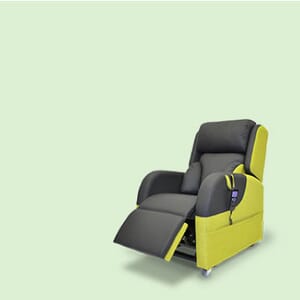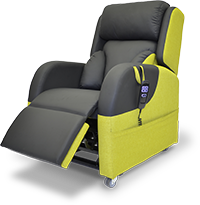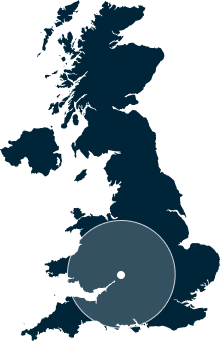Today, the physical and spiritual benefits of yoga are well known – making it an extremely popular form of exercise. But far less is known of yoga for the elderly, and far less again of elderly chair yoga. In this article, Premiere Healthcare explains its benefits to your patients and gives you a guide to some basic exercises.
Elderly chair yoga is a modification of ‘traditional’ yoga, featuring poses that are adapted so that they can be performed by older or seated people. The poses still maintain the basic body movements and mechanics of their non-seated counterparts, meaning your older patients still carry out the same twists, lifts, bends and stretches.
The benefits to the participant are abundantly clear. The patient improves their strength, meaning increased independence and the ability to carry out other activities, pastimes and daily routines more comfortably. They’re also more flexible, so life’s little challenges are more easily overcome and joint pain is lessened. Their increased health, strength and flexibility also mean reduced stress and anxiety – they have a far more positive outlook on life, with wellbeing far higher.
And, if nothing else, chair yoga provides a reason for your patients to socialise!
Some basic elderly chair yoga exercises
- Seated mountain
Sit upright, breathing out while pressing down into the chair. Your knees should be directly over your ankles. With your arms by your sides and your palms facing forwards, roll your shoulders back and relax your arms down at your sides. At the same time, lift your toes and press you’re the sole of your feet down.
- Seated forward bend
Focus on sitting as upright as possible and fold forward over your legs. You can either have your hands flat on your thighs, and slide them forward as you fold, or keep them by your sides. When leant forward, if possible, take five breaths before returning to the original position.
- Reverse arm hold
This stretches your shoulders and opens up your chest, which can help with posture, stress, and breathing difficulties. You should breathe in, stretching both arms to your sides. Then roll your shoulders forward before bending your elbows and swinging your hands gently behind your back. Once there, join hands and take five even breaths before releasing.
- Simple seated twist
Raise your arms out to your sides and lift them up. Then, gently twist your upper body to your right and lower your arms so that your left-hand rests at your side. If possible, look over your right shoulder using the chair to help stay in position. Take five breaths and repeat to your left side.
- Single leg stretch
Move as close to the edge of the seat as safely possible. Sit up straight, rest your right heel on the floor with your leg stretched out and toes pointing up. Rest both hands on the outstretched right leg, breathing in. As you do so, bend forwards over your right leg, sliding your hands down. Don’t stretch so far that it becomes a strain, and make sure you feel supported at all times. Then take in five deep breaths, slide back to the original position and repeat with the left leg.
Putting a new exercise regime into practice
If you’re thinking about trying some of the exercises mentioned above, and the activity is outside of your usual regime please do seek advice from your Physiotherapist or GP.
The right advice from specialists in chairs for the elderly
To help you decide which chair solution is right for you and your users, Premiere Healthcare is on hand. As experts in the provision, installation and ongoing servicing of specialist chairs for elderly and disabled users, we can give you a thorough guide to your caregiving options.
So if you’d like more in-depth advice on specialist chairs for the elderly, please don’t hesitate to get in touch. We have assessors all over the country who can come out and do home visits free of charge, and bring some chairs along for you to try on the day.
To book an assessment or find out more, please contact us online or call us on 0345 521 1819.









